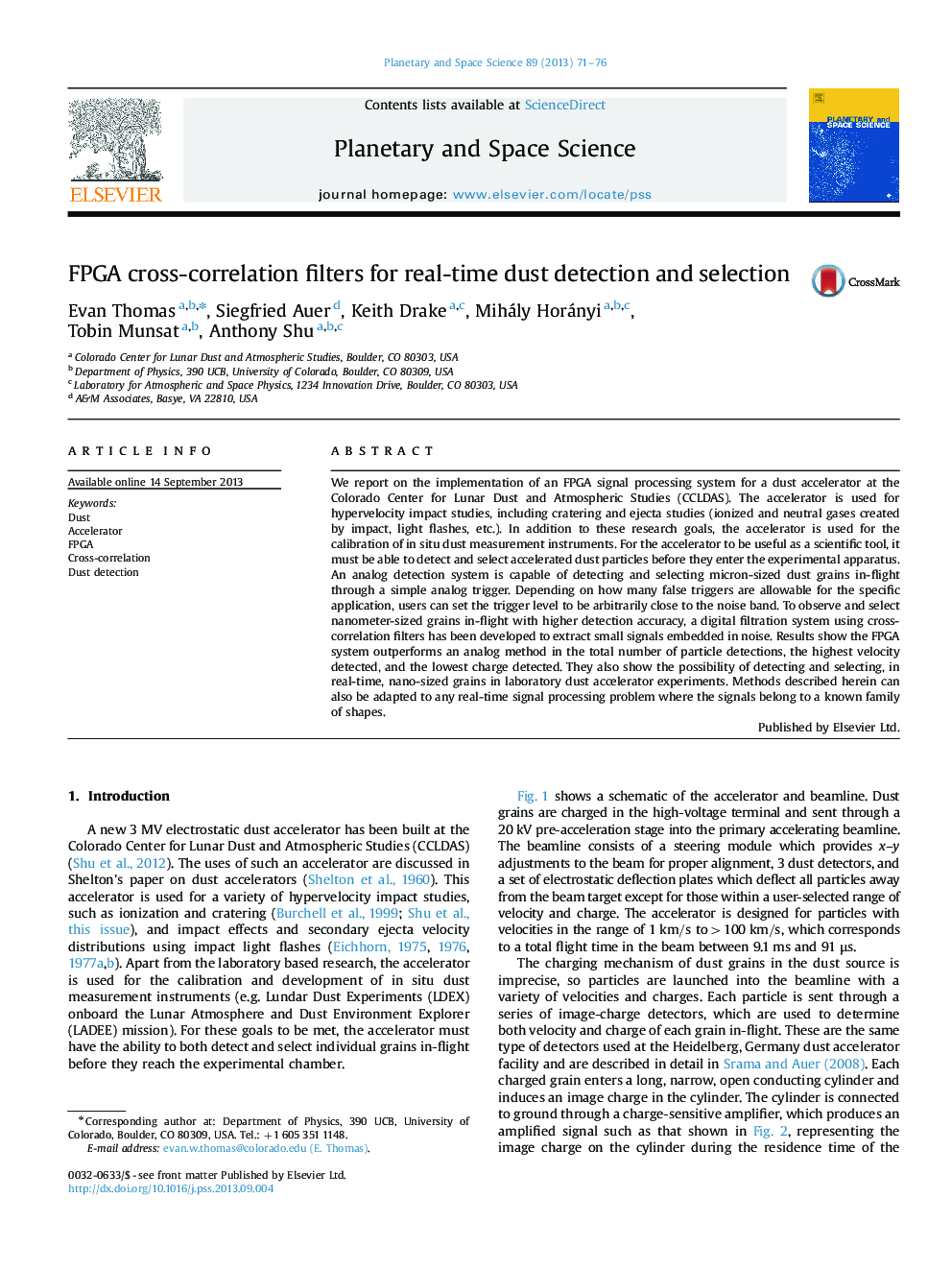| کد مقاله | کد نشریه | سال انتشار | مقاله انگلیسی | نسخه تمام متن |
|---|---|---|---|---|
| 1781236 | 1523947 | 2013 | 6 صفحه PDF | دانلود رایگان |

• We present a new method of dust detection in accelerator experiments.
• The method uses cross-correlation filters on an FPGA to extract signals embedded in noise.
• Results show the FPGA method improves upon an analog method of detection in total number of detections, the highest grain velocity detected, and the lowest charge detected.
We report on the implementation of an FPGA signal processing system for a dust accelerator at the Colorado Center for Lunar Dust and Atmospheric Studies (CCLDAS). The accelerator is used for hypervelocity impact studies, including cratering and ejecta studies (ionized and neutral gases created by impact, light flashes, etc.). In addition to these research goals, the accelerator is used for the calibration of in situ dust measurement instruments. For the accelerator to be useful as a scientific tool, it must be able to detect and select accelerated dust particles before they enter the experimental apparatus. An analog detection system is capable of detecting and selecting micron-sized dust grains in-flight through a simple analog trigger. Depending on how many false triggers are allowable for the specific application, users can set the trigger level to be arbitrarily close to the noise band. To observe and select nanometer-sized grains in-flight with higher detection accuracy, a digital filtration system using cross-correlation filters has been developed to extract small signals embedded in noise. Results show the FPGA system outperforms an analog method in the total number of particle detections, the highest velocity detected, and the lowest charge detected. They also show the possibility of detecting and selecting, in real-time, nano-sized grains in laboratory dust accelerator experiments. Methods described herein can also be adapted to any real-time signal processing problem where the signals belong to a known family of shapes.
Journal: Planetary and Space Science - Volume 89, December 2013, Pages 71–76